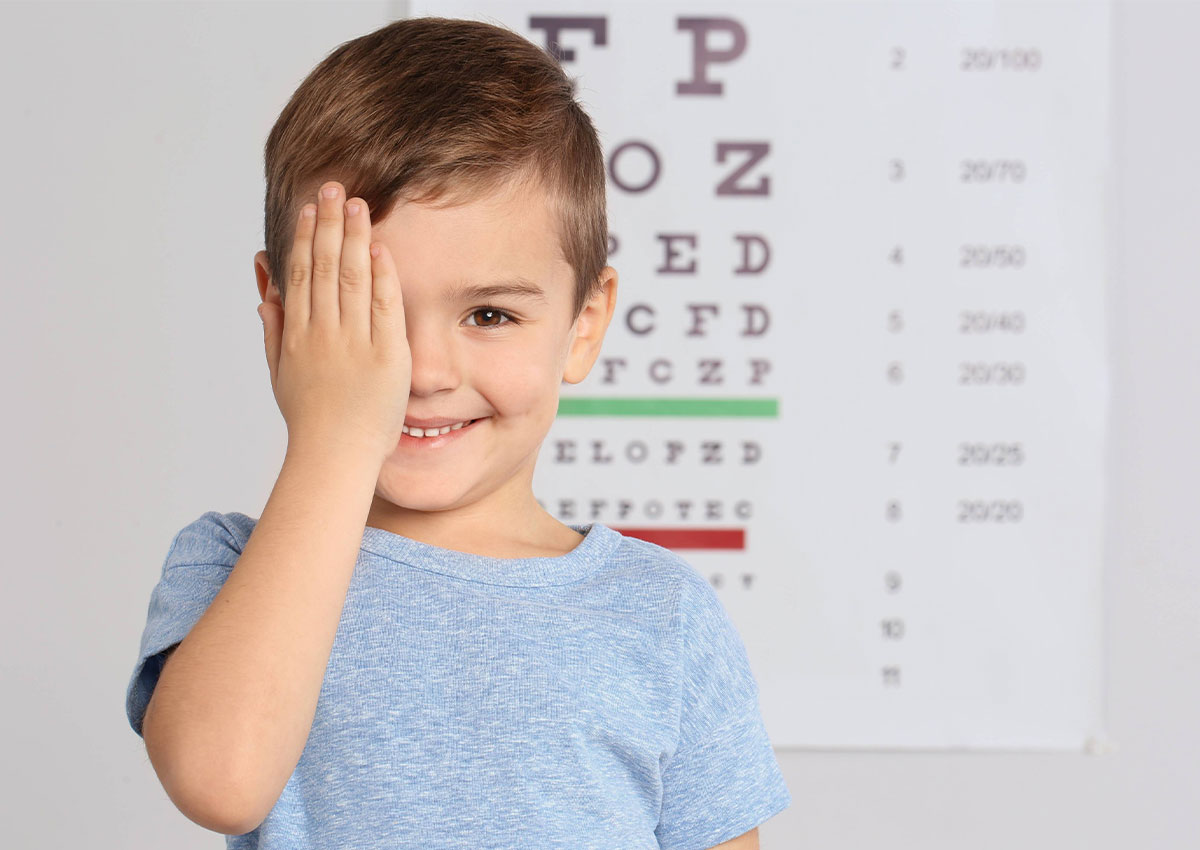Children’s Eye Health and Safety Awareness
Parents and schools must ensure that children and students participate in the activities that enable them to enjoy good vision and educate them to avoid the activities that may lead to a sudden eye injury or a condition that develops over time.

Vision is one of the five senses that is essential to normal development of a child. Critical aspect of vision is color differentiation and depth perception.
Uncorrected vision prevents children from reaching their highest potential in their academic, social, and professional spheres of life. Therefore, having routine eye examinations is essential for healthy development.
25% of preschool children have undiagnosed or untreated vision problems many of which escalate with time.
The bony structure that encapsulates the eyeballs changes with time and as children grow. Routine vision screening is thus recommended. A pediatrician can perform most of the routine vision screening. However, an ophthalmologist or optometrist should be consulted for a comprehensive screening examination to determine serious vision problems and their appropriate treatment.
Many schools in the United States perform complementary vision screening examinations which, in most cases, turn out to be the first exposure to vision screening.
Common Eye Conditions in Children
Refractive errors. Nearsightedness – also called myopia, farsightedness – also known as hyperopia, and Astigmatism are collectively called refractive errors. Astigmatism occurs when the cornea or the lens is not entirely round. In each of these conditions labeled as refractive errors, the light does not focus on the retina causing the image – and vision, in essence – to appear blurry. These are usually diagnosed in schools when students have difficulty in seeing the board, reading, writing or complain of headaches.
Amblyopia or lazy eye is another common condition. This implies the two eyes do not focus on an object simultaneously since one eye is stronger than the other eye. This stronger eye does most of the job while the weaker one continues to get worse.
Strabismus – or more commonly referred to as crossed eye – is a condition in which the external eye muscles responsible for the movement of the eyes lack strength causing one eyeball’s movement to lack behind the other. Consequently, the eyes cannot focus on the same object simultaneously.
Convergence insufficiency is the case when children see duplicate objects when observing from a closer range. As a result, children are unable to use mobile phones, computers and other activities that require relatively closer observation.
Consult an Ophthalmologist or Optometrist
Prevention of Vision Errors
Protecting vision is as significant as protecting any other part of the body. Following are some advisable activities and behavioral changes that help in ensuring a healthy vision.
- Improving the choice of food and eating well is crucial. The recommended diet that enhances vision includes fruits, vegetables, and vitamins. Carrots, in particular, are recommended because of high β-Carotene levels. B-carotene is converted to Vitamin A, a vital nutrient for vision.
- Limiting screen time also enables children to grow a healthy pair of eyes. Higher screentime worsens the problem related to uncorrected vision. It is advisable for children to take frequent breaks to relax the internal eye muscles and help the eye in the process to focus better.
- Adequate sleep is one of the vital aspects to ensure healthy vision. If children ensure a good 7-8 hours of sleep, the irritation and eyestrain caused by dry air and pollutants is neutralized.
- Major factor in prevention of any eye condition is the amount of time spent outdoors. It allows the eyes to see objects at different distances and train them to focus. Focusing on varying objects makes the internal eye muscles more active. Sunlight provides vitamin D which is essential for bone development. Besides, spending time outside allows children to develop social skills, hand-eye coordination, and other benefits of interaction.
- Excessive exposure to UV radiation is harmful to children and adults alike. Therefore, wearing sunglasses is important. Children often play games and sports that involve flying objects increasing the possibility of an injury to the eyes. Thus, protective wear is important to prevent eye trauma.
- Swimming goggles are advisable since the chlorinated water in pools may cause eye irritation.
- Educating children about general eye injuries is imperative. Moreover, the importance of regular eye examinations cannot be overstated. The change of the skeletal structure surrounding the eyeball – and the growth of muscles that are attached to an eye externally – can adversely affect the eye internally by impacting its shape.
- Preventing trauma to eyes include educating children about the injury that pens, pencils, scissors or other stationery items at schools may cause. The training should include sneezing and coughing away from these sharp objects and avoiding throwing such objects at fellow students.
Poor vision does not only affect children with their academic performances but social interaction too. It leads to adverse behavioral changes including loss of confidence and excessive mood swings. Parents and schools must ensure that children and students participate in the activities that enable them to enjoy good vision and educate them to avoid the activities that may lead to a sudden eye injury or a condition that develops over time.
mHospital enables you to consult medical specialists from the comfort of your home with telemedicine practice. You may also see a doctor in person. Schedule an appointment today.





